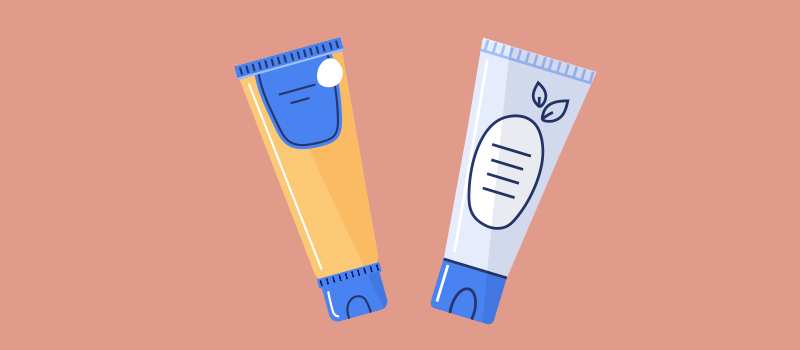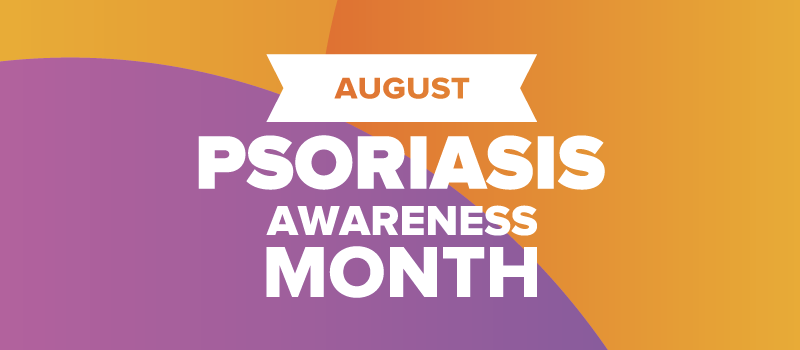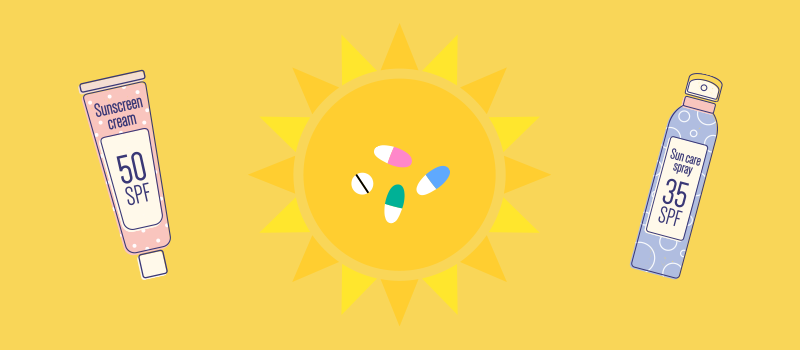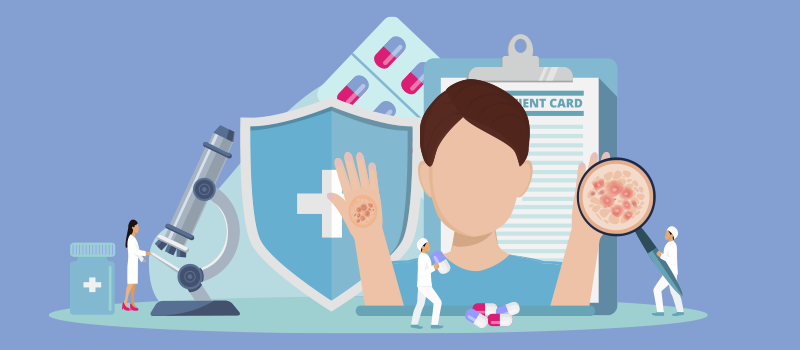What’s the Buzz
The Bee Healthy Blog
Antifungal Cream: Uses, Side Effects, & More

Using data collected in 2017, the Centers for Disease Control and Prevention (CDC) estimates approximately 75,000 hospitalizations and nearly 9 million outpatient visits for fungal diseases in the US. However, in addition to under-coding medical billing, the CDC says these numbers are likely a significant underestimate because fungal diseases often go undiagnosed. Fungal infections are relatively common and usually not extremely harmful—they are often treatable with an over-the-counter antifungal cream at your local drug store. However, people with weakened immune systems are at higher risk of developing severe fungal infections. With the coronavirus pandemic, COVID-19-associated fungal infections can lead to severe illness and death, even in healthy individuals.
Please continue reading to learn more about fungal infections and their treatment options, including the types of products available, their uses, duration of treatment, and possible side effects.
What are some common fungal infections?
Common fungal infections include:
- Fungal nail infections of the fingernails and toenails
- Ringworm (a fungal skin infection that looks like a circular rash and can affect the feet (athlete’s foot), groin (jock itch), scalp (tinea capitis), body (tinea corporis, and nails (tinea unguium))
- Vaginal candidiasis (a vaginal yeast infection caused by a yeast called Candida)
- Candida infections of the mouth and throat (also called oral thrush)
How do you treat a fungal infection?
In most cases, antifungal medicines can effectively treat fungal infections. Antifungal drugs target the fungal cell membrane and the fungal cell wall, and these drugs work in two ways - either by stopping and preventing the growing and multiplying of the fungal cells or by killing them directly.
Where do you put antifungal cream?
You put antifungal cream on the affected area where you have the infection. Antifungal medicines include creams, liquids, sprays, shampoos, vaginal suppositories, and oral medication. Injectable drugs such as intravenous fluconazole or voriconazole treat more severe fungal infections and are administered under the supervision of a healthcare provider in the hospital or an outpatient clinic.
Topical Antifungals (creams, liquids, sprays)
Topical antifungals are used to treat fungal infections of the scalp, skin, and nails, such as ringworm (athlete’s foot, jock itch, ringworm of the body, ringworm of the scalp), cutaneous candidiasis, tinea versicolor (pityriasis or sun fungus), seborrheic dermatitis (dandruff), fungal nail infections, and diaper rash. These drugs are usually safe for children. However, for your kid’s safety and to prevent any undesirable adverse event, you should always consult a healthcare provider and read the package instructions carefully before using any antifungal cream on your child. Examples of topical antifungals include:
Combination products of a topical antifungal with other medications such as topical steroids are also available. For example, the brand name Lotrisone contains clotrimazole (antifungal) and betamethasone (a steroid drug). The antifungal clears the infection, and the steroid provides relief from inflammation, swelling, redness, and itching caused by the infection.
Antifungal Shampoos
Shampoos containing the antifungal medicine ketoconazole (Nizoral) are used to treat dandruff and tinea versicolor, a fungal infection that causes skin discoloration.
Antifungal Suppositories and Tablets
Antifungal vaginal suppositories or tablets treat vaginal candidiasis (vaginal thrush). One full applicator or tablet must be inserted into the vagina at bedtime. The duration of therapy varies depending on the type of antifungal medicine and the drug strength. Your doctor will give you specific instructions on how long you should be using the medication; completing the entire course of therapy is important. Examples include clotrimazole, miconazole, econazole, terconazole, butoconazole, fenticonazole, and tioconazole.
Oral Antifungal Medicines
Oral antifungals are available in various forms, such as tablets, gels, and liquid suspensions. They treat oral thrush and are used as systemic therapy for nail infections, vaginal thrush, and ringworm. Examples include miconazole, nystatin, itraconazole, terbinafine, posaconazole, fluconazole, and voriconazole.
Antifungal Injections
Serious fungal infections like invasive candidiasis may need to be treated with intravenous (into the vein) antifungals. Examples include amphotericin B, voriconazole, itraconazole, flucytosine, caspofungin, anidulafungin, and micafungin.
Can antibiotics treat fungal infections?
No, antibiotics do not kill fungi or treat fungal infections. Antifungal medicines, which are different from antibiotics, are used to treat fungal infections. Indeed, taking inappropriate or unnecessary antibiotics can put you at risk of getting a fungal infection. For instance, some women develop a vaginal yeast infection after taking a course of antibiotics. This occurs because the antibiotic kills all the bacteria in the vagina, and some of that bacteria is necessary to maintain healthy vaginal flora. An imbalanced vaginal flora makes it easier for the fungus to grow.
Which is the best cream for a fungal infection?
The best cream for a fungal infection depends on the type and severity of the infection. For example, terbinafine is widely used to treat fungal nail infections, nystatin and miconazole are commonly used to treat oral thrush, and fluconazole is an effective treatment for vaginal thrush.
How long does it take for a fungal infection to clear?
Fungal infections can clear in anywhere from a few days to several weeks. The duration of treatment depends on the type and severity of the infection. For example, vaginal thrush (also known as vaginal yeast infection) may clear in a few days. Ringworm of the feet (athlete’s foot) can take 6 weeks to clear. Fungal nail infections and ringworm of the scalp can take 8 weeks to clear. It can take months or even years to clear fungal infections in the lungs or blood.
What are the side effects of antifungals?
Topical antifungals (creams, liquids, sprays, and shampoos) are generally well tolerated and do not cause severe side effects. Some people may experience mild redness, burning, irritation, or itching at the application site. If these side effects are severe, you should stop using the topical antifungal and contact your doctor.
Oral antifungal medicines taken by mouth don’t usually cause any problems; however, a small number of people can develop liver problems or other serious side effects from these medicines. Other common symptoms may include stomach ache, nausea, upset stomach, diarrhea, change in taste, loss of appetite, headache, muscle aches, and joint pain.
Can I buy antifungal medicines over the counter?
A number of antifungal creams are available over the counter. Others require prescriptions from doctors. Examples of over-the-counter (OTC) antifungals used to treat athlete’s foot, jock itch, vaginal yeast infections, and tinea versicolor
include:
- Clotrimazole (Lotrimin AF, Trivagizole 3)
- Miconazole (Vagistat, Monistat, Micatin)
- Terbinafine (Lamisil AT)
- Tolnaftate (Lamisil AF, Tinactin)
- Butenafine (Lotrimin Ultra)
It’s important to consult a healthcare professional and get a medical diagnosis so that you can use the right antifungal to treat your condition. You should use a prescription antifungal exactly as directed. If you’re using an OTC antifungal and are unsure which one is right, ask the pharmacist before purchasing one. Using the wrong medicine can make your infection worse. For example, applying products that contain steroid medicine on athlete's foot can make the infection worse.
References:












SOCIAL